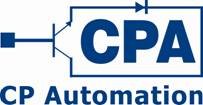Batman and Robin, Mario and
Luigi, Wallace and Gromit. In film, the role of the sidekick is crucial in aiding
the protagonist to achieve their overall goal. In the fight against power outages we explain the necessity of protecting uninterruptable
power supply (UPS) systems with a surge protection device (SPD) that accounts
for transient surges.
The role of a UPS is to provide
a secondary or backup power in the event of loss of utility power. The UPS protects
electrical and electronic systems, process controllers and data against the loss
of the primary power source.
A common misconception is that
SPDs are unnecessary due to the built-in protection already provided by UPS
systems themselves. The downside of this "built in" suppression is that
the typical UPS, if subjected to a line to ground transient, may allow a significant
amount of the transient downstream to the loads.
Transient protection should
exist at the input to all electronic loads and the UPS is no exception. This is
where SPDs come in, to prevent excess
voltage appearing at the terminals of sensitive equipment. Integrating one of
these devices into a systems architecture, ensures the life of the UPS and importantly
any equipment to which the UPS is supplying power.
High voltage
surges are normally covered by surge protectors. However, traditional SPDs do not
account for low level transient
surges. These transient surges in the sine wave are very damaging to electrical
equipment, as the additional peaks and troughs in the sine wave cause confusion
to sensitive devices and machines downstream. Transient surges can lead to false
zero crossings of the sine wave — the instantaneous point at which there is no
voltage present.
During maintenance and downtime
on the UPS, the SPD will filter out the transients and surges from the line
during the static by-pass mode or maintenance by-pass mode of operation, protecting
the connected computer equipment from damage.
However, not all SPD technology is the same.
The SineTamer cascade system for example, offers much more than a standard surge
protection device. It is an engineered transient disturbance filter, designed
to monitor all 360 degrees of the sine wave. Using 360-degree monitoring, the device
can prevent issues caused by false zero crossings of the sine wave.
If an organisation has already committed
to investing in sophisticated computer equipment and a UPS unit to protect against
power outages, the investment in an SPD is minimal by comparison and a very
natural progression. The benefits of this additional protection can be significant,
resulting in fewer maintenance problems and less downtime, which can reap havoc
for businesses.
While a UPS may function on its own,
the SPD is a reliable and necessary sidekick, providing complementary functions
in the fight against power failure problems.
Understanding the vital differences
between SPD technology can be key to protecting your devices. For more information about CP Automation’s SineTamer
product offering or alternative surge
protection devices, please visit www.cpaltd.net.




No comments:
Post a Comment